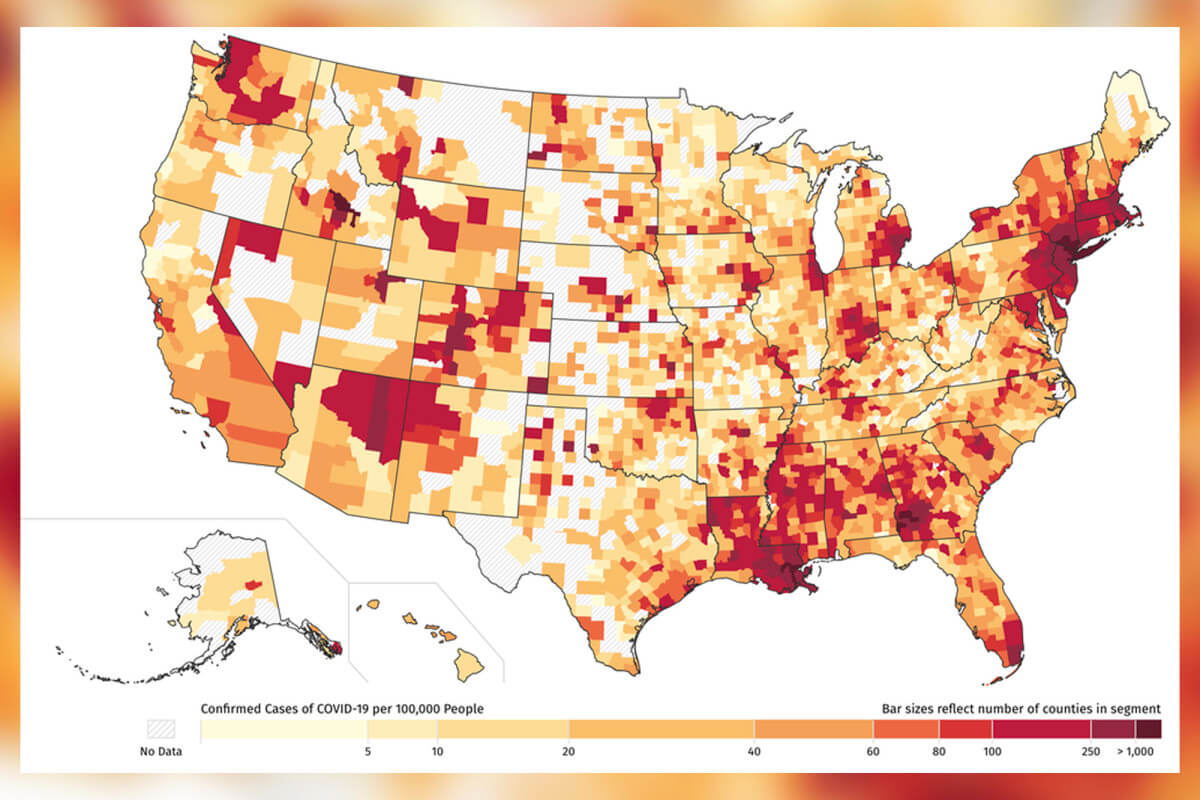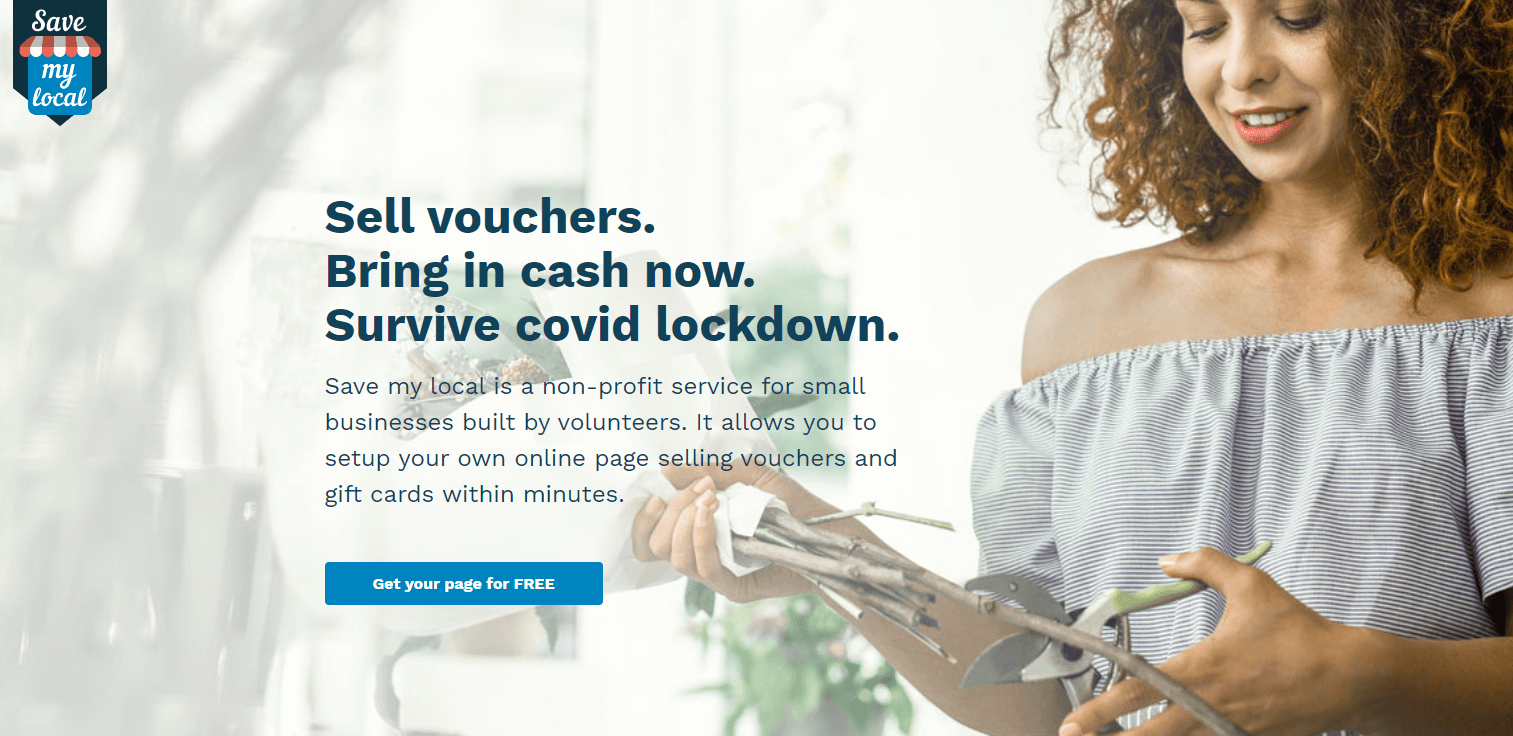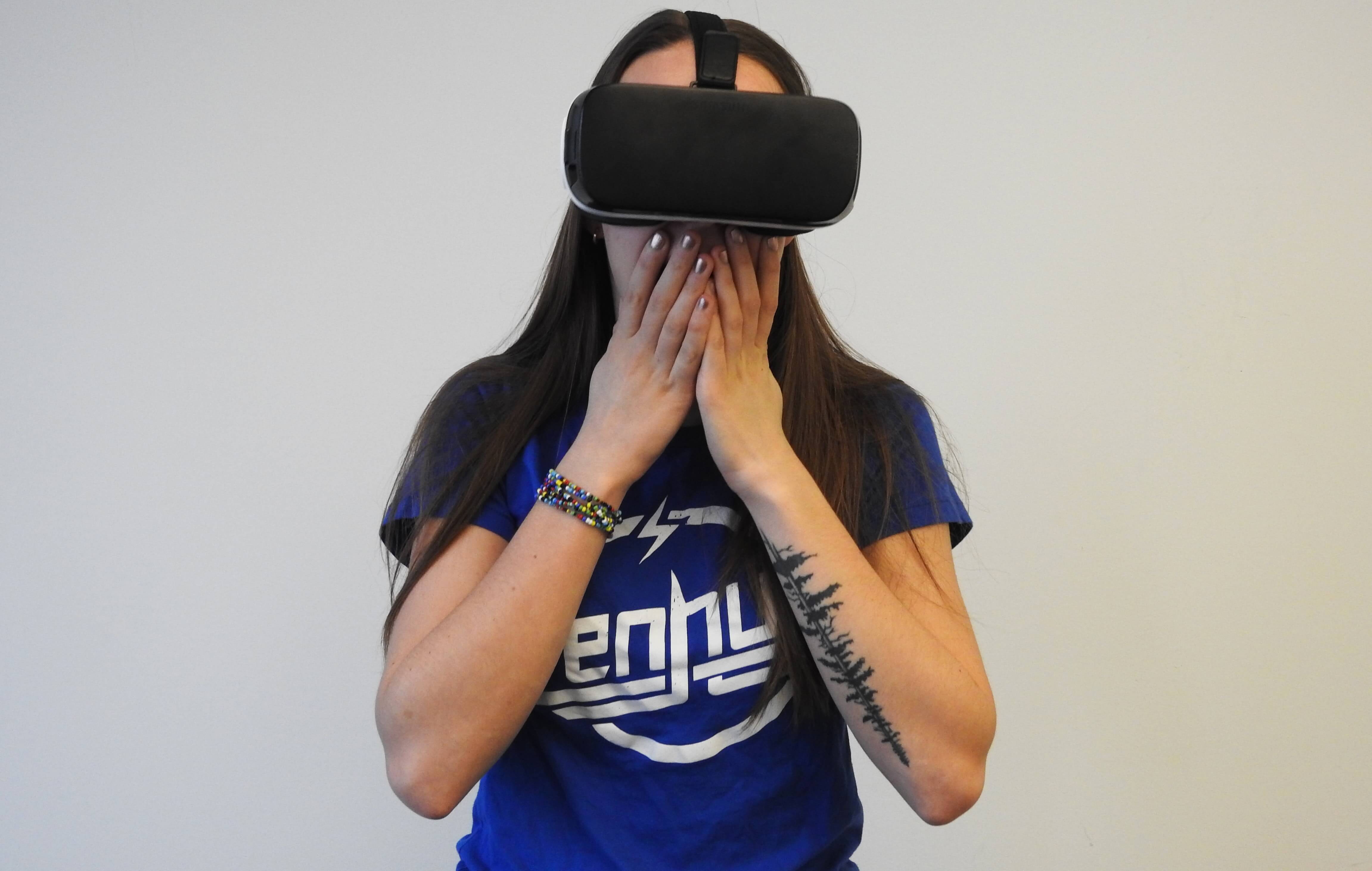COVID has wreaked havoc — but it’s also inspired a few post-pandemic business ideas.
The economical consequences of the COVID-19 pandemic have been devastating.
This outbreak has the potential to change the entire business landscape in the long run. Tough times like these shine a light on problems that have been disregarded by society, governments and the private sector. It’s become apparent that there is a need for innovative solutions that will open up new opportunities for entrepreneurs.
We invite you to consider seven post-pandemic business ideas, which have been circulating for some time but have never been more relevant than today.
Employee Sharing
With hotels, restaurants, airlines and other mostly non-essential businesses around the world on lockdown due to the pandemic, unemployment has skyrocketed quickly. In the US alone, there is an all-time high of over 3.28 million people enrolled for unemployment benefits.
Meanwhile, delivery companies, hospitals, grocers, and eCommerce are struggling to meet the increased demand with the human resources available to them. The travel ban is taking its toll too, as businesses in stronger European economies like Germany and France traditionally draw on the seasonal workforce from neighboring countries.
It is only natural that the market is responding with what Wall Street Journal’s Ruth Bender and Matthew Dalton call “the fastest reallocation of labor since World War II.” The staff from the non-essential sector is moving to the businesses that remain in operation, strained by the lockdowns.
In Germany, McDonald’s is lending its employees to two major grocery chains in need of a bigger workforce, Aldi Nord and Aldi Süd. According to the spokesperson for the board of directors of Aldi Nord, Nicolás de Lope, “this form of cooperation has so far been unique for Aldi.”
The lockdown is turning the employee-sharing model into a business trend. If it proves cost-efficient, it will become standard management practice.
Some large corporations might already have implemented a worker loan system supported by software. But there are numerous small and midsize businesses that don’t have this privilege.
If you develop an app that allows such companies to reap the benefits of personnel partnerships, it is likely to continue to be in demand once the labor market returns to normal. We stand ready to assist you with the implementation of such an app — just let us know you are thinking about it.
Update 2022:
Since the publishing of this blog post, many studies have been published on the topic of employee sharing. According to these reports, the model was used in 16 out of 27 European Union countries in 2020.
However, employee sharing wasn’t the most popular form of employment in Europe. It falls far behind remote models, but this is generally due to the fact that many jobs today can be done online. Both Asian and European researchers have outlined the main challenges of the model to a great extent, which startup ideas in this field should consider.
Will this cooperation model outlive the current crisis? We may find the answer in 2022, when, according to Reuters, the pandemic will probably become endemic.
Barter Tools
The ancient practice of bartering might make a major comeback in 2020.
Lucky are the brick-and-mortar businesses that have switched to the delivery-based online commerce model in response to the lockdown. But there are also less lucky businesses whose goods are stocked in the stores and warehouses while regular expenses keep accumulating.
Meanwhile, all businesses are experiencing hampered cash flow as consumption drops due to rising unemployment.
Heavy Restaurant Group based in Seattle had to close 10 of its restaurants, with some of the locations operating as pick-up-and-delivery to survive. The company recently purchased 56 cases of Malbec for barter credits worth $15,000.
“When cash is extra tight, it behooves us to buy as much as possible on trade,” explains David Yusen, the company’s director of business development.
Richard Crone, CEO of payments expert Crone Consulting LLC, said in an interview to Bloomberg that barter of household goods and food, worth $4 million in 2019, could reach $10 million in the US by the end of this year.
The real proof is in the numbers. The International Reciprocal Trade Association (IRTA) reported an increase in new memberships across their 100 barter exchanges by 20–35% in March. President and CEO of IRTA, Ron Whitney, believes that these challenging times represent an opportunity for their sector.
Roger J. Hamilton, an expert in entrepreneurship, adds more fuel to the fire by predicting a move into an era of microeconomies, where communities will trade among themselves using micro currencies and barter.
Some human rights groups have also expressed a readiness to embrace this old-new model. Adelina Nicholls, executive director of the Georgia Latino Alliance for Human Rights, wants to help organize barter trade among neighbors to weather what she described as an “econo-virus.”
If you have a pioneering startup idea of a bartering platform, a mobile app and/or a website, where goods are assigned value in digital points, now is the time to launch it. Should this system prove viable and users get comfortable with it, they will keep using the app after the lockdown.
Update 2022:
Bartering between small businesses has been growing lately. Barter exchange platform BizX has seen 265 more members join since the beginning of the pandemic.
The community has transacted about 13 million BizX dollars (the platform’s currency), with restaurants responsible for more than a million of those “dollars.” Eateries used bartering mostly to get materials required to enable outdoor dining and personnel protection equipment (PPE).
We are not yet out of the woods, though. Let’s wait and see if the trend will inspire innovative post-quarantine business ideas.
Indoor Cleaning Monitor
The shock and fear in society will remain long after the pandemic ends. This could suggest business ideas for post-pandemic commercial activities.
The award-winning chef and talk show host Robert Irvine said in an interview with Fox News that the biggest problem restaurants are going to face will be customer confidence.
“What do we do in the kitchen to make the consumer feel comfortable? Are we allowing people into the kitchen? Good question. Do they want to see that we are doing things safely? Yes, they do,” Irvine elaborated.
The South Florida Sun Sentinel spoke with local hospitality experts, whose words echoed Irvine’s. The respondents expect the importance of personal hygiene and sanitation to skyrocket, which will require catering business models to evolve.
Of course, people are already sick of self-isolation and desperate to flood their favorite locales once the pandemic is over, but restaurant owners take it with a grain of salt.
As Eddie Watana, owner of Eddie’s Thai restaurant in Cooper City, put it: “People keep saying on social media, ‘Oh, I can’t wait to dine out again,’ but I think they’re gonna be cautious for a long while.”
If that is not enough, governments can legitimately impose stricter measures on businesses that operate on substantial foot traffic.
What might help is introducing a system of cleaning tracking apps that would connect managers, cleaners and clients in a meaningful, transparent way.
If you have an idea for one such app, we’d be happy to help you bring it to life.
Update 2022:
We’ve seen several examples of cleaning software companies that saw a post-pandemic business opportunity by introducing monitoring.
Just look at Opsbase. The company has introduced an anti-COVID program with its application, merging cleaning checklists, contact tracing and door counter sensors. Opsbase claims that its product is compliant with FDA’s Hazard Analysis Critical Control Point (HACCP) regulations.
Outbreak Zone Detector
Seasonal flu has been a nuisance long before COVID-19.
According to WHO, seasonal influenza can spread to up to 20% of the population. The organization refers to a recent study that shows that respiratory diseases caused by such infections kill up to 650,000 people across the world annually.
This 2018 study estimates the average annual burden to the US economy imposed by influenza as $11.2 billion (from $6.3 to $25.3 billion), where direct medical costs range from $1.5 to $11.7 billion and indirect costs vary from $4.8 to $13.8 billion.
The COVID-19 pandemic has been an eye-opener on the devastation that infectious diseases can cause, and this is likely to nudge authorities to assign a higher priority to fighting infectious diseases.
One efficient way to reduce the consequences of flu outbreaks is by nipping the spread of infections in the bud through localization. An outbreak always begins in one zone, and if we could identify these on time across the world, a state, or even a city, we could inform the citizens and encourage them to self-isolate and stop the spread.

Based on information from people’s social media posts, local hospital traffic data and drugstore purchase stats, you could create an app that shows outbreak hot zones on the map. Users will be warned that these places are not safe to go to.
As a result, fewer people will get ill and die, which will reduce the negative impact on the economy. Municipal authorities love to be proud of their public health figures and economic numbers, so you can expect them to be willing to collaborate — at least to some degree.
Update 2022:
In May 2020, a team of researchers at Johns Hopkins University pioneered the COVID Control app. Its users can anonymously report coronavirus-related symptoms and see areas where the next outbreak might be developing. As of March 24, more than 19,000 users across the USA created over 174,000 data entries.
Gift Vouchers
Gift vouchers have been around for a while. Now their use is likely to skyrocket, as hospitality and offline entertainment are on hold.
Restaurants, hotels and similar businesses are now encouraging their loyal clientele to buy gift vouchers that can be cashed in when the industry is back on its feet. This helps them maintain cash flow today and ensure that they will have guests tomorrow.
In 2018, a survey on gift cards showed that 59% of people typically spent more than the card’s value, which is good news for the companies hoping that vouchers will help them recover once the lockdown is over. And people are buying gift cards now specifically to support their favorite local businesses.
Some entrepreneurs are already harnessing this trend: look at initiatives like Seattle-based Intentionalist and Pay Forward Project, and Save My Local in the UK. You can also see media giants keeping up with the trend as Instagram and USA Today enable gift card purchasing on their platforms.

As Laura Clise, founder of Intentionalist, put it: “There is just not equal access to technology and resources and know-how when it comes to getting online. If you don’t have an online presence, you have a significant disadvantage.”
If you are unsure whether your idea of an innovative digital platform for gift vouchers is viable, it’s time to give it a try. With Rubyroid Labs, you can quickly build an MVP and test the waters on the market.
Update 2022:
Google’s team analyzed searches for “gift card online” and found those have grown worldwide by more than 100% year over year. However, we haven’t yet seen an app or platform that would offer a breakthrough approach to gift cards.
Looking at the gift card initiatives we mentioned in 2020, you can see most of them are alive. From 68 to 640 local businesses across every state have used help from USA Today so far. Only Save My Local seems to have fallen into oblivion, as the link to their website redirects you to some other site.
Augmented and Virtual Reality
Self-isolation can give the long-awaited boost to virtual reality (VR) and augmented reality (AR), as people are increasingly seeking experiences that take them away from the space limited by their four walls.

Consumer readiness to spend money on VR and AR entertainment may be the driving force that will take the technology to a whole new level.
ABI Research, a global tech market advisory company, expects that the demand for telepresence and immersive content will result in 16 million shipments of AR and VR head-mounted displays (HMD) in 2021, “maintaining the trajectory of 3.5 million consumer AR shipments in 2024.”
Content provider PYMNTS predicts that VR will generate $1.8 billion via retail and marketing through 2022. Furthermore, 72% of Millennials and Gen Z consumers have stated that they’re willing to give visual search options a shot.
The more people get used to VR and AR entertainment through self-isolation, the higher are the chances for it to become one of the most prominent post-lockdown startup trends. If you have a business idea drawing on this technology, you should start working on it now, so you are ready when every household has an HMD integrated into its daily routine.
Update 2022:
Evidence for the popularity of VR and AR has been controversial so far. Take Zwift, Peloton cycling–paired software that uses VR to send cyclers on a virtual journey to faraway places. The company behind it claims its user growth has increased by two times year-on-year.
But there are other figures. Some analysts estimate people spent $1 billion on VR content in 2020. This fails to impress when compared to the $168 billion players spent on video games in 2020.
At the same time, we’ve seen interesting practical applications for AR. L’Oréal adopted Microsoft Corp.’s HoloLens 2 headset for operations with manufacturing equipment. And AR-glass producer Vuzix Corp. reported the doubling of sales to $4 million from the same period in 2019.
Consumer Services on Wheels
In some places, people are allowed to move a certain distance during the lockdown. Various businesses are now willing to come to your home to provide their service; if you still want to get your hair cut by a professional, there are now mobile hairdresser vans servicing some neighbourhoods.
Mobile beauty salons and hairdressers are not necessarily a new idea, but before COVID-19, people preferred going to the premises: they went because they enjoyed the social aspect, the chat and the complimentary cup of coffee, in addition to the service. Today, haircuts are more of a no-BS consumer service — and a way for businesses to stay afloat.
Rony Yagudaev, the owner of Uptown Barbershop in Phoenix, plans to switch to a house-call operation, whereby his team will come to a client and set up in their backyard.
“I want to find a solution for my guys and I think going mobile, where we come to you, would really help,” he explains.
Meanwhile in the UK, Stephen Richardson went mobile over two months ago after leaving his job at a traditional local barbershop due to the dramatic business slowdown.

Mobile barbershop in Virginia Beach. Source: Facebook
Brick-and-mortar salons and shops will not become busy again until the social distancing order is lifted, and when this will happen, nobody knows for sure. This means that consumer services on wheels are here to stay, which propels the need for apps that can help businesses and clients connect, schedule appointments, keep in touch and more.
It is interesting to note that the idea of “Uber for haircuts” has circulated for years now. The time has come to accelerate the implementation of such app ideas.
Update 2022:
As of the original publishing, going mobile was still emerging as a means to survive for the beauty and care businesses. How has it been so far?
We haven’t been able to follow Stephen Richardson’s mobile story. But we know Uptown Barbershop has recently opened a new location and seems to be back on track. This could be thanks to their ability to adopt the mobile model when it was necessary.
However, the barbershop’s website says nothing about house-call services. Whether or not this model makes it into 2022 remains to be seen.
Which of These Post-Pandemic Business Ideas Resonates With You?
The coronavirus situation is new to our world, and it is unlikely that anyone can predict all of its economic consequences now. Odds are that you will soon see new post-quarantine business trends become more prominent.
We wrote this article to help inspire you towards innovative business solutions that will remain highly relevant in the world after the lockdown. However, our seven post-pandemic startup ideas require research beyond the scope of this article, and that is your task as an entrepreneur.
The Rubyroid Labs team will be happy to partner with you and help you implement your idea. Contact us and we will find the best technology solutions for you.
Rubyroid Labs is a custom web development company. Learn more about our services.
![7 Post-Pandemic Business Ideas [Updated 2022]](https://rubyroidlabs.com/blog/wp-content/uploads/2020/05/lockdown@3x-1.jpg?x70132)



1 Comment
thank you